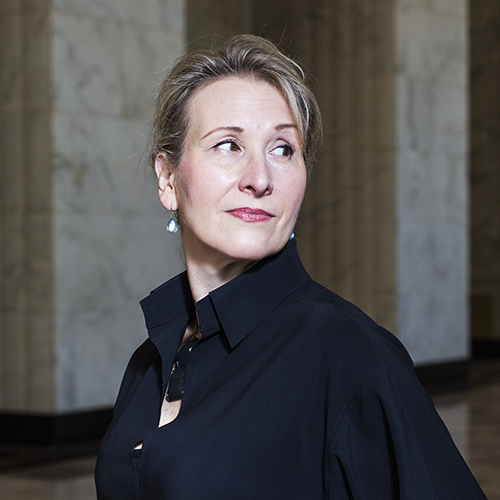Sean Callahan spent years in facilities management and workplace design for large finance operations, but when he pivoted to the technology sector by joining Carbonite, he found his approach impacted by one simple question: how do the employees feel?
“My experience at Carbonite has really opened my eyes to the balance of designing workplaces that are as culturally driven as they are business driven,” says Callahan, director of corporate real estate, workplace strategies, and solutions, adding, with a laugh, “I used to work in a sector where they’ll give you a coffee machine but you’ve got to bring your own coffee.”
To stay competitive in the tech landscape, Callahan must specifically design offices that keep Carbonite’s employees energized to continually innovate and pitch new ideas. The company offers online backup services to preserve documents, music, images, and other types of data securely, and it’s growing incredibly fast, with a number of acquisitions under its belt.
Callahan’s outside partners, including Holt Construction, enjoy working with him on these forward-thinking projects, too. “As we at Holt enter our 100th year in business, Sean Callahan—with his collaborative methods, innovation, and understanding of the construction industry—has assisted us in our long-term goals in the highly competitive Boston market,” says Holt marketing and design manager Michael Vasilev.
Here, Callahan explains further how he’s adhering to Carbonite’s mission while handling its expansion.
How would you characterize Carbonite’s current growth?
I feel like I’m working for a young startup company that is trying to mature. Our growth is very strategic in terms of acquisition and integration, and I’d credit the success to Carbonite’s vision and aggressive leadership. We were around the 500 mark in terms of employees when I started, and now we’ve got about 1,200.
In what ways does Carbonite work to integrate the new staff from these acquisitions?
One of the things I think is unique about the culture here is that our approach to real estate selection starts where people live. We do a zip code study independently and communicate with our employees to find out who they are. We cast the net in terms of real estate based on that information.
What would you say are your key needs in terms of facilities in Carbonite’s industry?
In an R&D facility, employees tend to care about the amenities. They care about snacks and beverages, parking, and, if they want to work out, showers. That’s been eye-opening to me because in my last company, we were on the domestic side of things. Over the years we were streamlining and trying to do away with those costs, but at Carbonite we have a robust program to keep ourselves competitive with other technology firms.
How would you describe your relationship with your vendors?
Well, one of the challenges is that every office wants to look like our headquarters in Boston, where the furniture is premium, there’s plenty of light, and it spans 60,000 square feet. We’re always trying to capture those aesthetics in our smaller markets, and my vendors have been very helpful in that regard. They give me the scale of economy and also the bandwidth to find products similar to what we have in Boston but at a fraction of the cost. This way, we can capture some of the aesthetics and branding of our headquarters. My vendors have become extensions of my team over the years. My success is contingent on theirs, so I manage them like they’re part of my own team, based on performance.
How are you preparing these new spaces for Carbonite’s future growth possibilities?
Modular building. You want to look at flexibility anytime you’re making a decision, so we’re building flexible furniture systems and mapping out standardization processes. And, an R&D facility is very different from a call center, so we we’ve tailored several of our offices to suit several different cross-functions.
Is the challenge of adapting to all of these different spaces an exciting part of the job for you?
It really is. I developed a global approach from my last several jobs, where I had bosses from South Africa, Australia, Ireland, and the Philippines. They all opened my eyes to thinking and considering how different cultures develop work spaces, which has impacted my own approach to delivering workplace services. Now, I get to pass all that knowledge down to my team.
Projects in Progress
Sean Callahan is currently balancing a number of different projects for Carbonite. Here’s a look at four locations in different phases of the leasing, designing, and building process:
Indianapolis, IN: Carbonite’s presence in Indianapolis sprouted after the acquisition of Double-Take, and considering that the city has become one of the US’s main technology hubs of late, the company fits right in. In May, it began construction on a 22,000-square-foot space that will function primarily as an R&D facility for 95 employees.
Salt Lake City, UT: Utah came into the picture after Carbonite acquired EVault, a cloud-backup and disaster-recovery service. The company’s 26,000-square-foot space there will accommodate roughly 150 people, and Callahan hopes standardization and remodeling efforts for it will be finished by the end of 2018.
Oakville, ON: Also part of the EVault acquisition, the Oakville office Carbonite acquired was in a distressed building in an industrial park that, according to Callahan, was “just not a good fit for a technology company.” The lease on that property ends in December, and, after consulting with the current employees, Callahan has five new properties lined up as possible contenders for a move.
Lewiston, ME: This 22,000-square-foot location will function primarily as a call center, and Callahan’s currently in the process of designing the workplace strategy for it. Lease negotiations are ongoing, and Callahan says he and his team are planning out how to renovate the space “in phases.”


